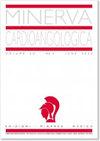Transradial artery access for percutaneous cardiovascular procedures: state-of-the-art and future directions.
Q3 Medicine
引用次数: 4
Abstract
The transradial access (TRA) for cardiac catheterization and percutaneous coronary intervention (PCI) has been widely adopted in the last decades since its first description in the late forties. The transradial approach has been associated with favourable outcomes as compared with transfemoral access (TFA) in several registries and randomized clinical trials, mainly due to the lower incidence of access-site bleedings, vascular complications and improved patient comfort. This review aims to summarize the body of evidence supporting the use of TRA, to discuss clinical implications, possible technical limitations and future directions, such as the implementation of TRA as the primary access for complex procedures and structural interventions.经皮心血管手术的经桡动脉通路:现状和未来方向。
经桡动脉通路(TRA)用于心导管插入术和经皮冠状动脉介入治疗(PCI)自上世纪40年代末首次被描述以来,在过去的几十年里被广泛采用。在一些登记和随机临床试验中,与经股入路(TFA)相比,经桡骨入路的预后较好,这主要是由于入路出血、血管并发症的发生率较低,并且改善了患者舒适度。本综述旨在总结支持TRA使用的证据,讨论临床意义、可能的技术限制和未来方向,例如将TRA作为复杂手术和结构性干预的主要途径。
本文章由计算机程序翻译,如有差异,请以英文原文为准。
求助全文
约1分钟内获得全文
求助全文
来源期刊

Minerva cardioangiologica
CARDIAC & CARDIOVASCULAR SYSTEMS-
CiteScore
1.60
自引率
0.00%
发文量
0
审稿时长
>12 weeks
期刊介绍:
A Journal on Heart and Vascular Diseases.
 求助内容:
求助内容: 应助结果提醒方式:
应助结果提醒方式:


